Signs of a faulty pressure regulator may be:
- – unstable engine operation;
- – the engine stalls at idle;
- – increased or decreased crankshaft speed at idle;
- – the engine does not develop full power, insufficient engine responsiveness;
- – jerks and dips in engine operation when the car is moving;
- – increased fuel consumption; – increased CO and CH content in exhaust gases.
You will need: a 5 mm Allen key, a 24 mm wrench, a pressure gauge (a tire gauge is fine).
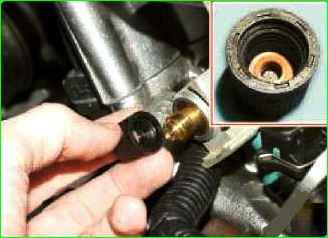
Unscrew the cap of the fuel pressure control valve at the end of the ramp.
Note that a sealing ring is installed in the cap.
If the ring is torn or has lost elasticity, replace it or the entire cap.
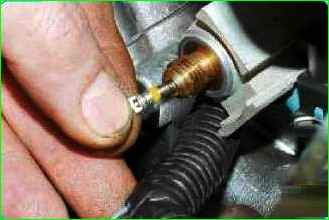
Using the metal protective cap of the tire valve, unscrew the valve core (the same as in the tire) from the valve.

Connect a hose with a pressure gauge to the valve (you can use a tire pressure gauge).
Secure the hose to the valve with a clamp. Start the engine and check the pressure on the pressure gauge.
It should be 284–325 kPa (2.9–3.3 kgf/cm 2).
Disconnect the vacuum hose from the pressure regulator.
The pressure on the pressure gauge should increase by 20–70 kPa (0.2–0.7 kgf/cm 2).
Otherwise, replace the pressure regulator.

To replace the regulator, loosen the fuel drain line nut, unscrew it and lower it down the line.
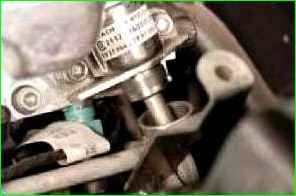

Disconnect the vacuum hose from the pressure regulator


Unscrew the two bolts securing the regulator to the fuel rail, remove the regulator from the rail seat and then remove it from the main pipeline.
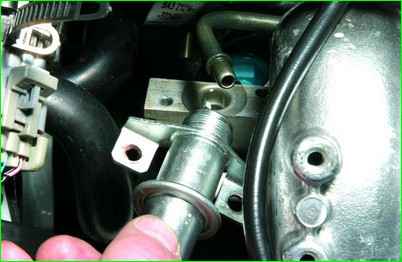

If the regulator sealing ring remains in the ramp, remove it
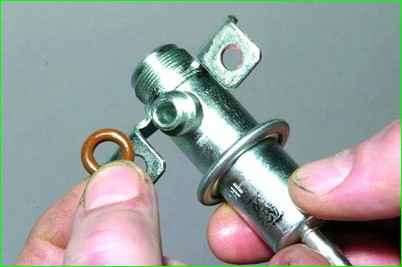
Put the sealing ring on the regulator before installation.
Replace a torn or loosened sealing ring
Install the regulator in the following order the opposite of removal.





